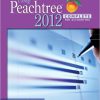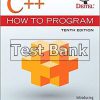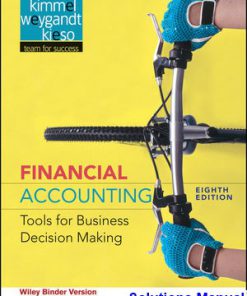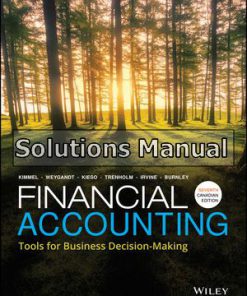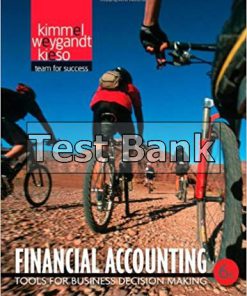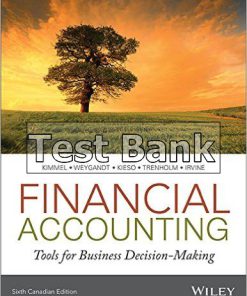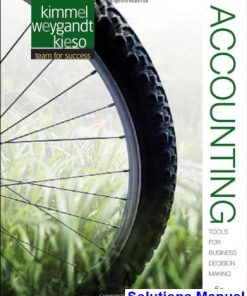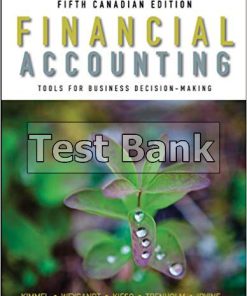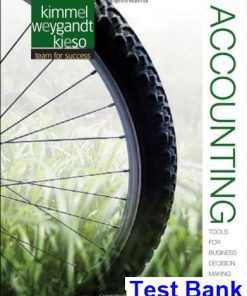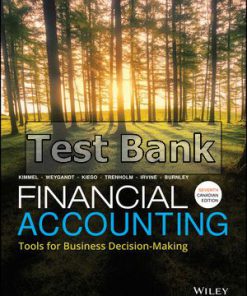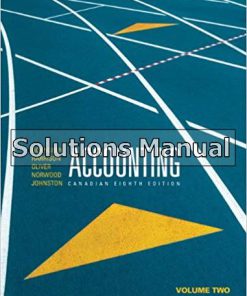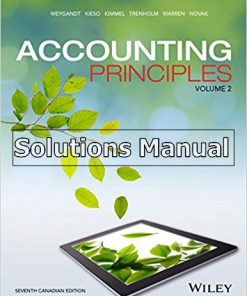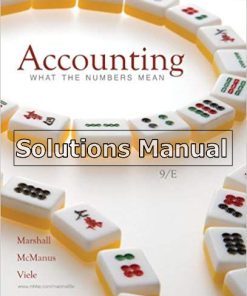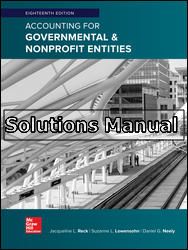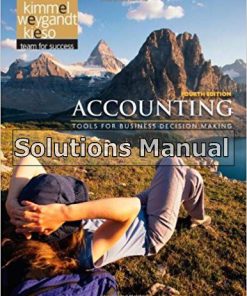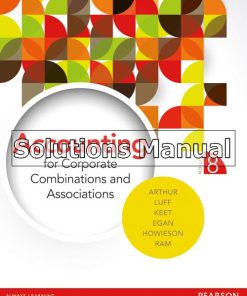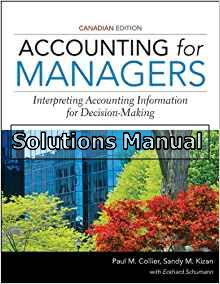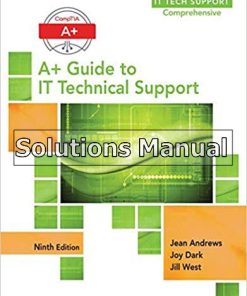Financial Accounting Tools for Business Decision Making Canadian 5th Edition Kimmel Solutions Manual
$50.00 Original price was: $50.00.$26.50Current price is: $26.50.
Financial Accounting Tools for Business Decision Making Canadian 5th Edition Kimmel Solutions Manual.
This is completed downloadable of Financial Accounting Tools for Business Decision Making Canadian 5th Edition Kimmel Solutions Manual
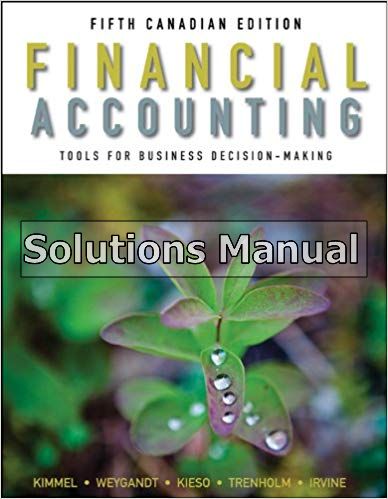
Product Details:
- ISBN-10 : 0470239808
- ISBN-13 : 978-0470239803
- Author: Paul D. Kimmel (Author), Jerry J. Weygandt (Author), Donald E. Kieso (Author)
Financial Accounting, 5th Edition provides students with an understanding of fundamental concepts necessary to use accounting effectively. Starting with a “macro” view of accounting information, the authors present real financial statements. They establish how a financial statement communicates the financing, investing, and operating activities of a business to users of accounting information. Kimmel, Weygandt and Kieso motivate students by grounding the discussion in the real world, showing them the relevance of the topics covered to their future.
Table of Content:
1 The Purpose and Use of Financial Statements 1-1
Trading on a Long Tradition: The North West Company 1-1
Uses and Users of Accounting Information 1-2
Internal Users 1-3
External Users 1-3
Forms of Business Organization 1-5
Proprietorships 1-5
Partnerships 1-5
Corporations 1-6
Generally Accepted Accounting Principles for Business Organizations 1-8
Types of Business Activity 1-9
Financing Activities 1-9
Investing Activities 1-10
Operating Activities 1-11
Summary of Business Activities 1-12
Financial Statements 1-13
The Financial Statements 1-14
North West’s Financial Statements 1-22
Elements of an Annual Report 1-26
2 A Further Look at Financial Statements 2-1
Fashioning Value for Investors: Aritzia 2-1
The Classified Statement of Financial Position 2-2
Assets 2-3
Liabilities 2-7
Shareholders’ Equity 2-10
Comprehensive Illustration 2-11
Using the Financial Statements 2-13
Using the Statement of Financial Position 2-14
Using the Statement of Income 2-17
Framework for the Preparation and Presentation of Financial Statements 2-20
Objective of General-Purpose Financial Reporting 2-21
Qualitative Characteristics of Useful Financial Information 2-21
Going Concern Assumption 2-24
Elements of Financial Statements 2-24
Measurement of the Elements 2-24
Summary of Conceptual Framework 2-25
3 The Accounting Information System 3-1
Keeping Good Accounts: It’s What You Do for the Brew: True Büch Kombucha 3-1
Analyzing Transactions 3-2
Analyzing Transactions Using the Accounting Equation 3-3
Analyzing Transactions Using the Accounting Equation—Illustrated 3-5
Recording Transactions 3-14
T Accounts 3-15
Normal Balances and Debit and Credit Effects 3-15
Financial Statement Relationships 3-20
Journalizing Transactions 3-21
General Journal 3-22
Posting Transactions 3-23
Chart of Accounts 3-24
Posting 3-25
The Recording Process Illustrated 3-26
Preparing a Trial Balance 3-34
Procedure for Preparing a Trial Balance 3-34
Limitations of a Trial Balance 3-35
Review of the Accounting Cycle—Steps 1–4 3-36
4 Accrual Accounting Concepts 4-1
School’s Out, Time to Balance the Books: Western University 4-1
Accrual Accounting and the Need for Adjusting Entries 4-2
Accrual Versus Cash Basis of Accounting 4-3
Revenue Recognition 4-5
Expense Recognition 4-8
Adjusting Entries 4-9
Adjusting Entries for Prepayments 4-12
Prepaid Expenses 4-12
Deferred Revenues 4-18
Adjusting Entries for Accruals 4-20
Accrued Expenses 4-21
Accrued Revenues 4-25
Summary of Basic Relationships 4-27
The Adjusted Trial Balance and Financial Statements 4-30
Adjusted Trial Balance 4-30
Financial Statements 4-31
Closing the Books 4-33
Closing Entries 4-34
Post-Closing Trial Balance 4-40
Review of the Accounting Cycle 4-41
5 Merchandising Operations 5-1
Going with the Flow: Loblaw Companies Limited 5-1
Merchandising Operations 5-3
Income Measurement Process 5-4
Inventory Systems 5-4
Recording Purchases of Merchandise 5-7
Purchases 5-8
Adjusting Entry at Period End 5-11
Summary of Purchase Transactions 5-12
Recording Sales of Merchandise 5-13
Sales 5-14
Summary of Sales Transactions 5-17
Statement of Income Presentation 5-19
Single-Step Statement of Income 5-19
Multiple-Step Statement of Income 5-20
Statement of Comprehensive Income 5-23
Evaluating Profitability 5-24
Gross Profit Margin 5-24
Profit Margin 5-25
Appendix 5A: Periodic Inventory System 5-26
Recording Purchases of Merchandise 5-27
Recording Sales of Merchandise 5-28
Calculating Cost of Goods Sold 5-29
Adjusting Entry at Period End 5-31
Statement of Income 5-32
Comparison of Entries: Perpetual vs. Periodic 5-33
Appendix 5B: Sales Returns and Sales Discounts Under ASPE 5-34
Sales Returns 5-34
Sales Discounts 5-35
6 Reporting and Analyzing Inventory 6-1
lululemon athletica Stretches Inventory Levels: lululemon 6-1
Determining Inventory Quantities 6-3
Determining Ownership of Goods 6-3
Taking a Physical Inventory and Making Count Adjustments 6-5
Internal Controls 6-5
Inventory Cost Determination Method 6-6
Specific Identification 6-7
First-In, First-Out (FIFO) 6-8
Average Cost 6-11
Effects of Cost Determination Methods 6-13
Choice of Cost Formula 6-14
Financial Statement Effects 6-14
Inventory Errors 6-17
Errors Made When Determining the Cost of Inventory 6-17
Errors Made When Recording Goods in Transit at Period End 6-19
Presentation and Analysis of Inventory 6-20
Valuing Inventory at the Lower of Cost and Net Realizable Value 6-20
Reporting Inventory 6-22
Inventory Turnover 6-23
Appendix 6A: Inventory Cost Determination Methods in Periodic System 6-25
First-In, First-Out (FIFO) 6-26
Average Cost 6-28
7 Internal Control and Cash 7-1
Cash Control Down to a Tea: DAVIDsTEA 7-1
Internal Control 7-2
Control Activities 7-3
Limitations of Internal Control 7-8
Fraud 7-10
Cash Controls 7-11
Control Activities over Cash Receipts 7-11
Control Activities over Cash Payments 7-13
Bank Accounts—A Key Control Activity 7-15
Bank Statements 7-15
Reconciling the Bank Account 7-18
Reporting and Managing Cash 7-24
Reporting Cash 7-25
Managing Cash 7-25
8 Reporting and Analyzing Receivables 8-1
Steering Clear of Bad Debts: NFI Group 8-1
Accounts Receivable 8-2
Recording Accounts Receivable 8-3
Subsidiary Ledgers 8-4
Uncollectible Accounts Receivable 8-6
Measuring and Recording Expected Credit Losses 8-7
Writing Off Uncollectible Accounts 8-11
Collecting Uncollectible Accounts 8-12
Summary of Allowance Method 8-13
Notes Receivable 8-14
Recording Notes Receivable 8-15
Derecognizing Notes Receivable 8-16
Statement Presentation of Receivables 8-18
Statement of Financial Position 8-18
Statement of Income 8-18
Managing Receivables 8-19
Extending Credit 8-20
Establishing a Payment Period 8-20
Monitoring Collections 8-20
Evaluating Liquidity of Receivables 8-21
9 Reporting and Analyzing Long-Lived Assets 9-1
WestJet’s Assets Are for the Long Haul: WestJet 9-1
Property, Plant, and Equipment 9-2
Determining Cost 9-3
To Buy or Lease? 9-6
Depreciation 9-7
Depreciation Methods 9-8
Comparison of Depreciation Methods 9-14
Other Issues 9-15
Derecognition 9-18
Sale of Property, Plant, and Equipment 9-18
Retirement of Property, Plant, and Equipment 9-21
Intangible Assets and Goodwill 9-23
Accounting for Intangible Assets 9-23
Goodwill 9-27
Statement Presentation of Long-Lived Assets 9-29
Statement of Financial Position 9-29
Statement of Income 9-31
Statement of Cash Flows 9-31
Analyzing Assets 9-32
Return on Assets 9-32
Asset Turnover 9-33
Profit Margin Revisited 9-33
10 Reporting and Analyzing Liabilities 10-1
Planting and Planning for the Future: Interfor 10-1
Current Liabilities 10-2
Operating Line of Credit 10-3
Sales Taxes 10-4
Property Taxes 10-5
Payroll 10-6
Provisions and Contingent Liabilities 10-9
Interest-Bearing Liabilities 10-11
Liabilities with Principal Due at Maturity 10-12
Liabilities with Instalment Payments 10-14
Advantages and Disadvantages of Debt Financing 10-18
Statement Presentation and Analysis 10-18
Presentation 10-18
Analysis 10-20
Appendix 10A: Bonds Payable 10-24
Accounting for Bond Issues 10-25
Accounting for Bond Interest Expense 10-26
Accounting for Bond Retirements 10-29
Determining the Issue Price of Bonds 10-30
11 Reporting and Analyzing Shareholders’ Equity 11-1
Owning Shares Is a Family Affair: Leon’s Furniture 11-1
Corporate form of Organization 11-2
Characteristics of a Corporation 11-3
Share Issue Considerations 11-5
Share Capital 11-8
Common Shares 11-8
Preferred Shares 11-11
Dividends 11-14
Cash Dividends 11-15
Stock Dividends 11-16
Stock Splits 11-18
Comparison of Effects 11-19
Presentation of Shareholders’ Equity 11-20
Statement of Financial Position 11-20
Statement of Changes in Equity (IFRS) 11-23
Statement of Retained Earnings (ASPE) 11-24
Summary of Shareholders’ Equity Transactions 11-24
Measuring Corporate Performance 11-26
Dividend Record 11-26
Earnings Performance 11-29
12 Reporting and Analyzing Investments 12-1
Managing Money for Clients and the Company: Scotiabank 12-1
Classifying Investments 12-2
Why Companies Invest 12-3
Non-Strategic Investments 12-3
Strategic Investments 12-4
Accounting for Non-Strategic Investments 12-5
Valuation of Non-Strategic Investments 12-6
Using a Fair Value Model 12-7
Accounting for Strategic Investments 12-10
Using the Equity Method 12-12
Using the Cost Model 12-14
Reporting Investments 12-16
Statement of Income 12-16
Statement of Comprehensive Income 12-17
Statement of Changes in Equity 12-17
Statement of Financial Position 12-18
Appendix 12A: Investments in Bonds 12-23
Recording a Bond Investment for the Investor 12-24
Recording a Bond for Investor and Investee 12-26
13 Statement of Cash Flows 13-1
The Statement of Cash Flows: A Feature Presentation: Cineplex 13-1
Reporting of Cash Flows 13-3
Classification of Cash Flows 13-3
Format of the Statement of Cash Flows 13-5
Preparation of the Statement of Cash Flows 13-6
The Operating Activities Section of the Statement of Cash Flows Using the Indirect Method 13-9
Preparing the Operating Activities Section 13-10
Summary of Conversion to Net Cash Provided (Used) by Operating Activities 13-16
The Investing Activities Section of the Statement of Cash Flows 13-18
Preparing the Investing Activities Section 13-18
The Financing Activities Section and Completion of the Statement of Cash Flows 13-22
Preparing the Financing Activities Section 13-23
Completing the Statement of Cash Flows 13-26
Using Cash Flows to Evaluate a Company 13-28
Corporate Life Cycle and Cash Flows 13-28
Free Cash Flow 13-30
Appendix 13A: The Operating Activities Section of the Statement of Cash Flows Using the Direct Method 13-31
Cash Receipts 13-32
Cash Payments 13-33
Summary of Conversion to Net Cash Provided (Used) by Operating Activities 13-36
14 Performance Measurement 14-1
Growing a Business, Shrinking Expenses: Sobeys 14-1
Comparative Analysis 14-3
Horizontal Analysis 14-3
Vertical Analysis 14-7
Ratio Analysis 14-12
Liquidity Ratios 14-13
Current Ratio 14-13
Receivables Turnover 14-14
Inventory Turnover 14-16
Liquidity Conclusion 14-17
Summary of Liquidity Ratios 14-17
Solvency Ratios 14-19
Debt to Total Assets 14-19
Times Interest Earned 14-20
Free Cash Flow 14-20
Solvency Conclusion 14-21
Summary of Solvency Ratios 14-21
Profitability Ratios 14-22
Gross Profit Margin 14-23
Profit Margin 14-24
Asset Turnover 14-25
Return on Assets 14-26
Return on Common Shareholders’ Equity 14-27
Basic Earnings per Share 14-28
Price-Earnings (P-E) Ratio 14-29
Payout Ratio 14-30
Dividend Yield 14-31
Profitability Conclusion 14-32
Summary of Profitability Ratios 14-32
Limitations of Financial Analysis 14-34
Diversification 14-34
Alternative Accounting Policies and Estimates 14-34
Other Comprehensive Income 14-35
Nonrecurring Items 14-35
Appendix A Specimen Financial Statements: The North West Company Inc. A-1
Appendix B Specimen Financial Statements: Sobeys Inc. B-1
Glossary G-1
Rapid Review RR-1
Company Index / Subject Index I-1
People Also Search:
financial accounting tools for business decision making canadian
financial accounting tools for business decision making canadian 5th edition
financial accounting tools for business decision making canadian solution manual download pdf
financial accounting tools for business decision making canadian download scribd
Instant download after Payment is complete
You may also like…
Accounting
Financial Accounting Tools for Business Decision Making 8th Edition Kimmel Solutions Manual
Solutions Manual
Financial Accounting Tools for Business Decision-Making Canadian 7th Edition Kimmel Solutions Manual
Test Bank
Financial Accounting Tools for Business Decision Making Canadian 6th Edition Kimmel Test Bank
Test Bank
Financial Accounting Tools for Business Decision Making Canadian 5th Edition Kimmel Test Bank
Test Bank
Financial Accounting Tools for Business Decision-Making Canadian 7th Edition Kimmel Test Bank
Related products
Solutions Manual
Accounting Volume 2 Canadian 8th Edition Horngren Solutions Manual
Solutions Manual
Accounting For Governmental And Nonprofit Entities 18th Edition Reck Solutions Manual
Solutions Manual
Solutions Manual
A+ Guide to IT Technical Support Hardware and Software 9th Edition Andrews Solutions Manual


